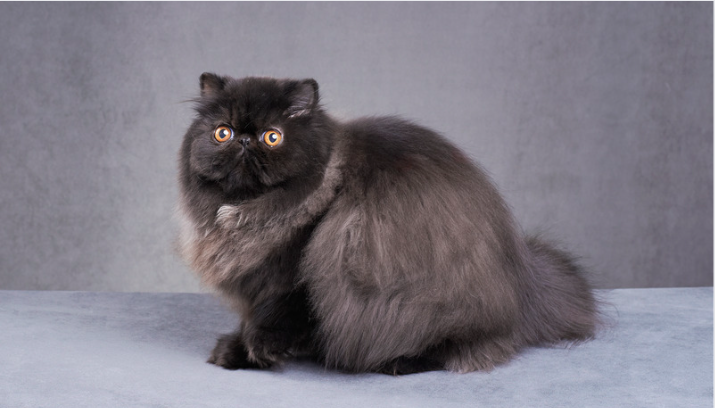Cats
Persian Cats: The Ultimate Guide To This Majestic Breed

Persian Cats: The Ultimate Guide To This Majestic Breed
Persian cats are one of the most popular and beloved cat breeds in the world.
Known for their long and luxurious fur, flat faces, and sweet disposition, these cats make wonderful companions for families and individuals alike.
In this guide, we will explore the history, physical characteristics, personality traits, and care requirements of Persian cats.
Whether you’re a long-time cat lover or a first-time cat owner, this guide will provide you with valuable insights into the world of Persian cats and help you provide your furry friend with the love, attention, and care they deserve.
So, if you’re ready to learn more about these beautiful and fascinating cats, let’s dive in and explore the world of Persian cats together.
What are Persian Cats?
Persian cats are a breed of domesticated cats that are known for their long and luxurious fur, flat faces, and sweet disposition.
These cats are one of the most popular breeds in the world and are recognized by their unique physical characteristics and charming personality.
History
The history of Persian cats can be traced back to ancient Persia, now known as Iran. These cats were highly valued by the nobility and aristocracy, who saw them as symbols of luxury and refinement.
It is believed that Persian cats were first brought to Europe in the 17th century by Italian traders, where they quickly became popular among the upper classes.
Physical Characteristics
One of the most distinctive features of Persian cats is their long, fluffy fur, which can come in a wide range of colors and patterns.
The fur of a Persian cat is thick and dense, which requires regular grooming to prevent matting and tangling.
Persian cats also have flat faces, round heads, and large, expressive eyes, which give them a unique and charming appearance. Persian cats are a medium-sized breed, typically weighing between 7 and 12 pounds.
They have broad chests, short legs, and thick, muscular bodies. Despite their small size, Persian cats are surprisingly heavy due to their thick and dense fur.
Personality Traits
Persian cats are known for their sweet, gentle nature and make great companions for families and individuals alike. They are intelligent, affectionate, and playful, and they love nothing more than curling up on their owner’s lap for a nap.
Persian cats are also known for their calm and laid-back personality. They are not as active as some other cat breeds, preferring to spend their time lounging in a sunny spot or cuddling with their owners.
This makes them an ideal pet for people who want a loving companion without the need for daily exercise.
Varieties
Persian cats come in a variety of types, including traditional, doll-face, and flat-faced.
Traditional Persian cats have a more traditional appearance, with a round face and nose, while doll-face Persian cats have a longer nose and flatter face.
Flat-faced Persian cats have extremely flat faces and noses, which can cause health problems and require special care.
In addition to their different facial structures, Persian cats can also come in a wide range of colors and patterns, including white, black, blue, cream, and red.
They can also have tabby, calico, and tortoiseshell markings, among others.
Overall, Persian cats are a wonderful breed of cat that are beloved for their sweet disposition, beautiful appearance, and low-maintenance needs.
Whether you’re a long-time cat lover or a first-time cat owner, a Persian cat is a great choice for a companion.
Physical Characteristics of Persian Cats
One of the most distinctive features of Persian cats is their long, fluffy fur, which can come in a wide range of colors and patterns.
The fur of a Persian cat is thick and dense, which requires regular grooming to prevent matting and tangling.
Coat
The coat of a Persian cat is one of its most striking physical characteristics. It can be long or short and comes in a variety of colors, including solid, shaded, smoke, and bicolor.
The coat can also have different patterns, such as tabby, calico, and tortoiseshell.
Persian cats have a long and thick double coat, with a soft undercoat and longer guard hairs on top. The fur on the belly, chest, and legs is usually shorter and less dense than the fur on the rest of the body.
Head
Persian cats have round heads and flat faces, which gives them a distinctive appearance. The nose of a Persian cat is short and broad, and the nostrils can sometimes be obstructed, which can cause breathing problems.
The eyes of a Persian cat are large and round and can be green, blue, gold, or a combination of colors. Their ears are small and rounded, with long tufts of hair on the tips.
Body
Persian cats have compact and muscular bodies, with broad chests and short legs. They are a medium-sized breed, typically weighing between 7 and 12 pounds.
Despite their small size, Persian cats are surprisingly heavy due to their thick and dense fur.
Feet
The paws of Persian cats are large and round, with long tufts of fur between the toes. This helps them walk on soft surfaces, such as carpets, without sinking in.
The claws of a Persian cat are retractable, which allows them to climb and scratch without damaging surfaces.
Tail
The tail of a Persian cat is long and bushy, with long fur that matches the rest of the coat.
Persian cats use their tails for balance and communication, and they can often be seen twitching and flicking their tails when they are excited or happy.
Overall, the physical characteristics of Persian cats make them a unique and charming breed, with their long and luxurious fur, flat faces, and expressive eyes.
While they require regular grooming and care, they are well worth the effort for their beauty and affectionate personality.
Personality Traits of Persian Cats
Persian cats are known for their sweet, gentle nature, making them great companions for families and individuals alike.
They are intelligent, affectionate, and playful, and they love nothing more than curling up on their owner’s lap for a nap. Here are some of the personality traits that make Persian cats so beloved:
Sweet Disposition
Persian cats are known for their calm and laid-back personality, which makes them an ideal pet for people who want a loving companion without the need for daily exercise.
They are affectionate and enjoy being close to their owners, often following them around the house and seeking out attention.
Playful
Despite their relaxed nature, Persian cats also have a playful side. They enjoy toys, games, and other forms of entertainment, and they can often be seen chasing balls or batting around a toy mouse.
Their playful nature makes them great companions for children, who can enjoy spending time with them and playing together.
Intelligent
Persian cats are also intelligent animals, with a curious and inquisitive nature.
They enjoy exploring their surroundings and learning about new things, and they can often be seen investigating objects or watching their owners with interest.
Affectionate
Perhaps one of the most endearing traits of Persian cats is their affectionate nature. They enjoy being close to their owners and will often seek out cuddles and affection.
They are known for their gentle and loving nature, which makes them ideal pets for people who want a companion that will provide them with emotional support and love.
Overall, the personality traits of Persian cats make them a wonderful breed of cat that is beloved by many.
Their sweet disposition, playful nature, intelligence, and affectionate personality make them a great choice for families and individuals alike.
By providing them with love, attention, and care, you can ensure that your Persian cat will thrive and be a loyal companion for years to come.
Taking Care of Persian Cats
Taking care of a Persian cat requires some effort, but the rewards are well worth it. Here are some essential tips for keeping your Persian cat healthy and happy:
Grooming
The long fur of Persian cats requires regular grooming to prevent matting and tangling. You should brush your cat’s coat daily, using a soft-bristled brush or comb.
This will help remove loose fur and prevent hairballs. You should also bathe your cat once a month to keep its fur clean and free of dirt and debris.
In addition to brushing and bathing, you should also trim your cat’s nails regularly. This will prevent them from scratching furniture or injuring themselves.
Diet
Persian cats require a diet that is rich in protein and low in carbohydrates. You should feed your cat high-quality cat food that is specifically formulated for their breed.
This will provide them with the nutrients they need to maintain a healthy coat, strong muscles, and good overall health.
You should also provide your cat with fresh water at all times. This will help keep them hydrated and prevent urinary tract infections.
Exercise
While Persian cats are not as active as some other cat breeds, they still require regular exercise to keep them healthy and happy.
You should provide your cat with toys and games to keep them mentally stimulated, as well as opportunities to play and explore their surroundings.
Interactive toys, such as feather wands or laser pointers, can be a great way to engage your cat in playtime. You can also provide them with climbing structures or perches to help them exercise and stay active.
Health
Like all cat breeds, Persian cats are prone to certain health problems, including kidney disease, dental issues, and obesity.
To keep your cat healthy, you should take them to the vet for regular checkups, and make sure they receive all necessary vaccinations and treatments.
You should also monitor your cat’s weight and provide them with a healthy diet and regular exercise. This will help prevent obesity and other health problems.
Environment
Persian cats thrive in a clean and comfortable environment. You should provide your cat with a litter box that is cleaned regularly, as well as a comfortable bed or perch to sleep on.
You should also provide your cat with plenty of toys and scratching posts to keep them mentally stimulated and prevent destructive behavior.
Overall, taking care of a Persian cat requires some effort, but the rewards are well worth it. By providing them with love, attention, and care, you can ensure that your cat will be healthy, happy, and thriving for years to come.
Conclusion
In conclusion, Persian cats are a wonderful breed of cat that are beloved for their sweet disposition, beautiful appearance, and low-maintenance needs.
Whether you’re a long-time cat lover or a first-time cat owner, a Persian cat is a great choice for a companion.
By following the tips in this guide, you can keep your Persian cat healthy, happy, and thriving for years to come.
Questions People Also Ask: (FAQs)
What is the lifespan of a Persian cat?
The average lifespan of a Persian cat is between 12 and 15 years, although some can live up to 20 years with proper care.
Are Persian cats good with children?
Yes, Persian cats are generally good with children and make great family pets.
Do Persian cats shed a lot?
Yes, Persian cats shed a lot due to their long fur. Regular grooming and brushing can help minimize shedding and keep their coat healthy.
Are Persian cats high-maintenance?
Persian cats do require regular grooming and care, but they are not necessarily high-maintenance. With a little effort and attention, they can be relatively low-maintenance pets.
Do Persian cats get along with other pets?
Persian cats can get along with other pets, but they may need some time to adjust to new animals in the household. Proper introductions and socialization can help ensure a harmonious relationship.
What is the personality of a Persian cat?
Persian cats are known for their sweet, gentle nature. They are affectionate, playful, and intelligent, making them great companions for families and individuals alike.
Are Persian cats hypoallergenic?
No, Persian cats are not hypoallergenic. They do produce dander, which can cause allergies in some people. Regular grooming and keeping the home clean can help minimize allergens.
We hope this guide has provided you with valuable insights into the world of Persian cats. With their unique appearance and charming personality, these cats make a wonderful addition to any household.
By following the tips in this guide, you can keep your Persian cat healthy, happy, and thriving for years to come.
We appreciate you for taking the time to read this article!
Finally, we hope you found this article interesting? And what do you think about ”Persian Cats: The Ultimate Guide To This Majestic Breed!?”
Please feel free to share or inform your friends about this article and this site, thanks!
And let us know if you observe something that isn’t quite right.
Cats
Clever Cats: Breeds That Learn Fast
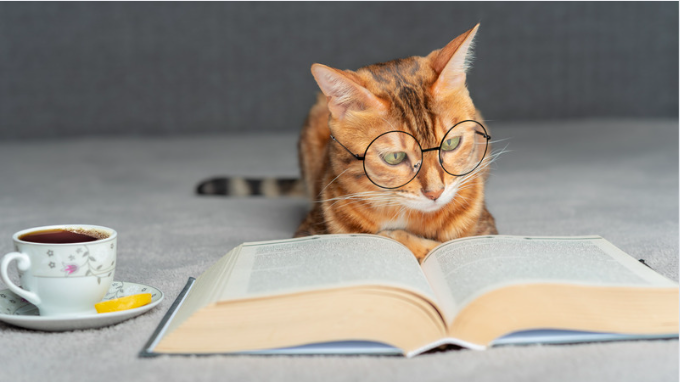
Clever Cats: Breeds That Learn Fast
Cats have always fascinated us with their agility, independence, and sometimes enigmatic behavior. Among the vast array of feline breeds, some stand out for their remarkable intelligence and ability to learn quickly.
In this article, we will delve into the world of these exceptional cat breeds, exploring their unique characteristics, training capabilities, and what makes them such quick learners.
Whether you’re a seasoned cat owner or considering adopting a new feline friend, this comprehensive guide will help you understand the breeds that are not only intelligent but also a joy to train.
Why Intelligence Matters in Cats
Understanding Feline Intelligence
Feline intelligence is a multi-faceted trait that encompasses problem-solving abilities, social learning, and adaptability. Unlike dogs, cats often showcase their intelligence in more subtle ways, such as manipulating objects to get what they want or learning routines and commands.
Benefits of Owning Intelligent Cats
Owning an intelligent cat comes with several benefits. These cats are more interactive and engaging, making them excellent companions. They can learn tricks, follow commands, and even understand basic household rules, which makes living with them more enjoyable and less challenging.
Top Cat Breeds Known for Their Intelligence
Abyssinian
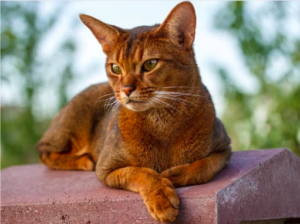
Overview
The Abyssinian is often hailed as one of the smartest cat breeds. Known for their curiosity and playful nature, Abyssinians are quick learners who thrive on mental stimulation.
Training and Activities
Abyssinians are highly trainable and enjoy interactive toys and puzzle feeders. They can learn tricks such as fetching and even walking on a leash. Their love for heights means they appreciate cat trees and climbing structures.
Siamese
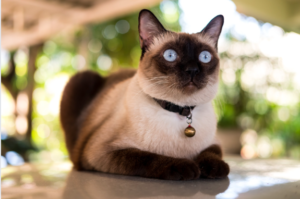
Overview
Siamese cats are not only intelligent but also highly vocal and sociable. They form strong bonds with their owners and are always eager to engage in activities.
Training and Activities
Siamese cats are quick to learn tricks and commands. They enjoy interactive play and can be trained to perform simple tasks like opening doors or retrieving items. Their vocal nature also makes them responsive to verbal cues.
Bengal
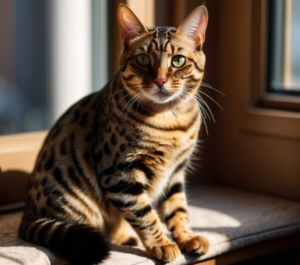
Overview
Bengals are known for their striking appearance and high energy levels. Their intelligence is reflected in their ability to solve problems and learn complex tasks.
Training and Activities
Bengals enjoy activities that challenge their minds, such as agility courses and puzzle toys. They can be trained to walk on a leash and perform tricks. Providing them with interactive playtime helps in channeling their energy positively.
Burmese
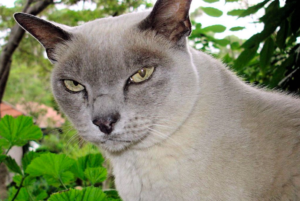
Overview
Burmese cats are affectionate, people-oriented, and intelligent. They enjoy being involved in family activities and can be trained to follow various commands.
Training and Activities
Burmese cats are quick learners and respond well to positive reinforcement. They enjoy learning tricks, playing fetch, and interactive games that stimulate their minds.
Scottish Fold
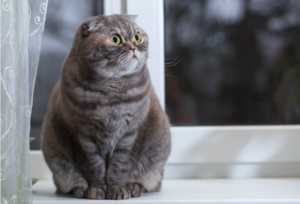
Overview
Scottish Folds are known for their distinctive folded ears and sweet demeanor. Despite their calm appearance, they are intelligent and can learn quickly.
Training and Activities
Scottish Folds enjoy interactive toys and games. They can learn tricks and commands and appreciate routines that keep their minds engaged.
Training Tips for Intelligent Cats
Start Early
Begin training your cat as early as possible. Kittens are more receptive to learning new behaviors and routines.
Use Positive Reinforcement
Reward your cat with treats, praise, or playtime whenever they successfully perform a desired behavior. Positive reinforcement strengthens the association between the action and the reward.
Keep Sessions Short and Fun
Cats have shorter attention spans than dogs, so keep training sessions brief and enjoyable. Incorporate playtime to make learning fun for your cat.
Be Patient and Consistent
Patience and consistency are key when training cats. Repeat commands and routines regularly, and avoid punishing your cat for mistakes. Consistency helps reinforce learning and builds trust.
Challenges of Training Intelligent Cats
Independence and Stubbornness
Intelligent cats can sometimes be independent and stubborn. They might choose to ignore commands if they are not in the mood, so it’s important to understand their behavior and work with it.
Need for Mental Stimulation
Highly intelligent cats require constant mental stimulation. Boredom can lead to behavioral issues, so ensure they have plenty of toys, activities, and interaction to keep their minds engaged.
Managing High Energy Levels
Breeds like Bengals have high energy levels that need to be managed. Providing them with enough physical and mental exercise is crucial to prevent destructive behavior.
Living with Intelligent Cats
Creating an Enriched Environment
An enriched environment is essential for intelligent cats. This includes a variety of toys, climbing structures, scratching posts, and interactive feeders to keep them stimulated.
Social Interaction
Intelligent cats thrive on social interaction. Spend quality time playing, training, and simply bonding with your cat to ensure they feel valued and engaged.
Understanding Their Needs
Each intelligent breed has its own unique needs and preferences. Understanding these and catering to them will help you build a strong and positive relationship with your cat.
Conclusion
Owning an intelligent cat can be an incredibly rewarding experience. These quick learners bring joy, challenge, and companionship to their owners. By understanding their unique characteristics and providing the right environment and training, you can foster a deep and fulfilling relationship with your feline friend.
Whether you choose an Abyssinian, Siamese, Bengal, Burmese, or Scottish Fold, you’re sure to enjoy the remarkable intelligence and personality they bring into your home.
Frequently Asked Questions (FAQs)
What makes a cat breed intelligent?
Intelligent cat breeds often show high levels of problem-solving abilities, adaptability, and social learning. They can quickly learn commands, tricks, and routines.
Can all cats be trained?
While some breeds are more receptive to training than others, all cats can be trained to some extent. Patience, consistency, and positive reinforcement are key to successful training.
What are the best toys for intelligent cats?
Interactive toys, puzzle feeders, and climbing structures are ideal for intelligent cats. These toys provide mental stimulation and keep them engaged.
How do I keep my intelligent cat from getting bored?
Provide a variety of toys, engage in regular playtime, and introduce new activities regularly. Rotating toys and creating an enriched environment also help prevent boredom.
Are intelligent cats more difficult to care for?
Intelligent cats can be more demanding in terms of mental stimulation and interaction. However, with the right approach and environment, they can be delightful companions.
We appreciate you for taking the time to read this article!
Finally, we hope you found this article interesting? And what do you think about ”Clever Cats: Breeds That Learn Fast!?”
Please feel free to share or inform your friends about this article and this site, thanks!
And let us know if you observe something that isn’t quite right.
Cats
The Enchanting Scottish Fold: A Guide to the Adorable Feline with Folded Ears
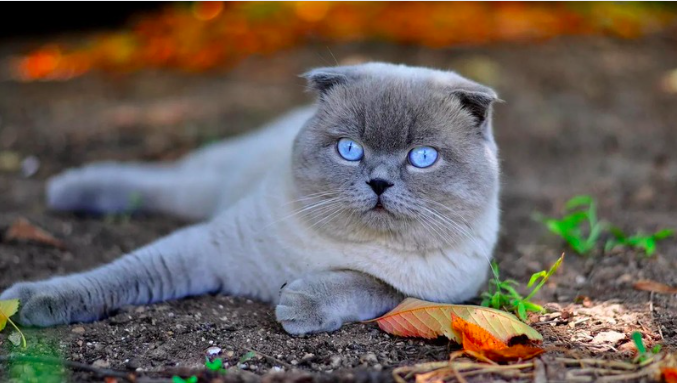
The Enchanting Scottish Fold: A Guide to the Adorable Feline with Folded Ears
Welcome to the world of the Scottish Fold cat, where charm and curiosity meet in an irresistibly adorable package. With their distinctive folded ears and sweet expression, Scottish Folds have captured the hearts of cat lovers around the world. Originally hailing from Scotland, these cats are known for their gentle demeanor, playful nature, and loving personality.
In this comprehensive guide, we will delve into the fascinating world of Scottish Fold cats, exploring their history, physical characteristics, personality traits, and care requirements. Whether you’re a seasoned cat owner or considering adding a feline friend to your family, the Scottish Fold’s unique charm and affectionate nature make them a delightful addition to any home. Join us as we unravel the enchanting tale of the Scottish Fold cat and discover why they are such beloved companions.
Fold
Overview
The Scottish Fold cat is a charming and distinctive breed known for its unique folded ears and sweet expression. Originating from Scotland in the 1960s, these cats have captured the hearts of many with their endearing appearance and affectionate nature. Scottish Folds are known for their gentle and loving temperament, making them wonderful companions for families and individuals alike.
History and Origins
The Scottish Fold breed traces its roots back to a white barn cat named Susie, who was found in Scotland in the early 1960s. Susie had a unique genetic mutation that caused her ears to fold forward, giving her an owl-like appearance. This trait was passed down to her kittens, and thus, the Scottish Fold breed was born. The breed quickly gained popularity for its distinctive look and friendly demeanor, and it was officially recognized by cat registries in the 1970s.
Physical Characteristics
- Folded Ears: The most distinctive feature of the Scottish Fold is its folded ears, which give the cat a sweet and owl-like appearance. Not all Scottish Folds have folded ears; some may have straight ears, known as “straights,” which are also common in the breed.
- Coat and Colors: Scottish Folds can have either a short or long coat, both of which are dense and plush. They come in a variety of colors and patterns, including tabby, tortoiseshell, and solid colors like white, black, and blue.
- Body Structure: Scottish Folds are medium-sized cats with a rounded appearance. They have sturdy bodies, round faces, and large, expressive eyes that give them a sweet and gentle expression.
Personality and Behavior
Scottish Folds are known for their calm and laid-back demeanor. They are affectionate cats that enjoy being around people and are often described as “lap cats” due to their love of cuddling. They are also known for their playful nature and enjoy interactive toys and games. Scottish Folds are generally good with children and other pets, making them a great choice for families.

Health and Care
- Ear Care: Due to their folded ears, Scottish Folds may be prone to ear infections. It’s important to regularly check and clean their ears to prevent issues.
- Grooming: Scottish Folds have dense coats that require regular grooming to prevent matting and tangling. Weekly brushing is usually sufficient to keep their coat in good condition.
- Health Concerns: Scottish Folds are generally healthy, but they may be prone to certain genetic conditions, including a skeletal disorder known as osteochondrodysplasia. Responsible breeding practices can help minimize the risk of these health issues.
Training and Activities
Scottish Folds are intelligent cats that can be trained to perform tricks and commands. They enjoy interactive play and benefit from toys that stimulate their minds and bodies. Providing them with scratching posts and other outlets for their natural behaviors can help keep them happy and healthy.
Compatibility with Families and Other Pets
Scottish Folds are known for their gentle and affectionate nature, making them great companions for families. They are good with children and other pets, including dogs, and can adapt well to different environments. Their loving and sociable nature makes them a popular choice for households looking for a friendly and affectionate pet.
Conclusion
The Scottish Fold cat is a unique and charming breed known for its folded ears and sweet expression. With their gentle demeanor and affectionate nature, Scottish Folds make wonderful companions for families and individuals alike. Whether you’re looking for a lap cat to cuddle with or a playful friend to keep you entertained, the Scottish Fold cat is sure to bring joy and companionship to your home.
FAQs about Scottish Fold Cats
Why do Scottish Folds have folded ears?
Scottish Folds have a genetic mutation that affects the cartilage in their ears, causing them to fold forward. This unique trait gives them their distinctive appearance.
Are Scottish Folds prone to ear problems due to their folded ears?
Yes, Scottish Folds may be more prone to ear infections due to the fold in their ears, which can trap dirt and moisture. Regular cleaning and monitoring of their ears can help prevent issues.
Do Scottish Folds have any health issues associated with their folded ears?
Scottish Folds may be prone to a condition called osteochondrodysplasia, which affects the development of their cartilage and bones. Responsible breeding practices can help reduce the risk of this condition.
Are Scottish Folds good with children and other pets?
Scottish Folds are known for their gentle and friendly nature, making them good companions for families with children and other pets. They enjoy socializing and being part of the family.
Do Scottish Folds require a lot of grooming?
Scottish Folds have dense coats that require regular grooming to prevent matting and tangles. Weekly brushing is recommended to keep their coat in good condition.
We appreciate you for taking the time to read this article!
Finally, we hope you found this article interesting? And what do you think about ”The Enchanting Scottish Fold: A Guide to the Adorable Feline with Folded Ears!?”
Please feel free to share or inform your friends about this article and this site, thanks!
And let us know if you observe something that isn’t quite right.
Cats
The Enchanting Burmese Cat: Affectionate, Playful, and Loyal
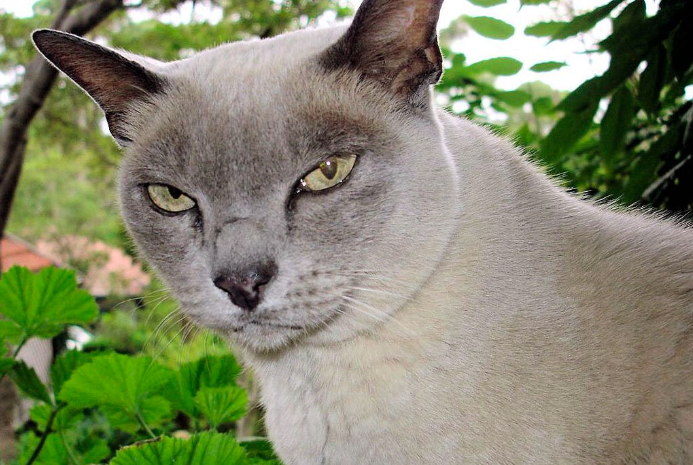
The Enchanting Burmese Cat: Affectionate, Playful, and Loyal
Enter the world of the Burmese cat, where elegance meets affection in a charming feline companion. Originating from the temples of Burma, these cats have captured the hearts of cat lovers worldwide with their striking appearance and loving nature. With their sleek coats, expressive eyes, and playful demeanor, Burmese cats are not just pets; they are cherished members of the family.
In this comprehensive guide, we delve into the captivating world of Burmese cats, exploring their history, physical characteristics, personality traits, and care requirements. Whether you’re a seasoned cat owner or considering adding a feline friend to your family, the Burmese cat’s unique blend of beauty, intelligence, and affection is sure to captivate you. Join us as we unravel the enchanting tale of the Burmese cat and discover why they are such beloved companions.
Burmese
Overview
The Burmese cat is a breed known for its striking appearance and affectionate nature. Originating from Burma (now Myanmar), these cats are renowned for their sleek, muscular bodies, expressive eyes, and silky coats. Burmese cats are often described as “people-oriented,” as they form strong bonds with their human companions and enjoy being part of the family. Their playful and curious nature makes them delightful companions for both children and adults alike.
History and Origins
The history of the Burmese cat can be traced back to ancient Burma, where they were considered sacred and kept by monks in temples. They were later brought to the West in the early 20th century and quickly gained popularity for their striking appearance and affectionate personality. The breed has since become a favorite among cat enthusiasts worldwide, known for its loving and loyal nature.
Physical Characteristics
- Coat and Colors: Burmese cats have short, sleek coats that lie close to the body. They come in a variety of colors, including sable, champagne, blue, and platinum. The coat is soft and silky to the touch, adding to the breed’s overall charm.
- Body Structure: Burmese cats are medium-sized with a muscular build. They have rounded heads, large, expressive eyes, and short, straight noses. Their compact bodies give them a sturdy appearance, and they move with grace and agility.
- Eyes and Ears: Their eyes are one of their most striking features, being large, expressive, and usually a deep, rich color that complements their coat. Their ears are medium-sized, slightly rounded at the tips, and set wide apart on the head.
Personality and Behavior
Burmese cats are known for their affectionate and sociable nature. They are often described as “dog-like” due to their tendency to follow their owners around the house and seek out human companionship. They are also highly intelligent and enjoy interactive play, making them great companions for families with children or other pets.
In addition to their affectionate nature, Burmese cats are also known for their vocalizations. They have a soft, sweet voice that they use to communicate with their owners, often engaging in “conversations” and expressing their needs and desires.
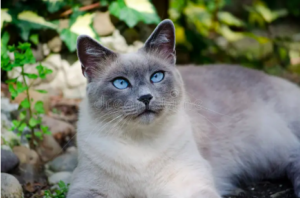
Health and Care
- Grooming: Burmese cats have short coats that require minimal grooming. Weekly brushing is usually sufficient to remove loose hair and keep their coat shiny. They also benefit from regular dental care to prevent oral health issues.
- Diet: A high-quality, balanced diet is essential for maintaining the health and vitality of Burmese cats. They should be fed a diet that is appropriate for their age, size, and activity level to ensure they receive the nutrients they need.
- Health Concerns: Burmese cats are generally healthy, but they can be prone to certain genetic conditions such as hypertrophic cardiomyopathy (HCM) and diabetes. Regular veterinary check-ups and a healthy diet can help manage these risks.
Training and Activities
Burmese cats are intelligent and can be trained to perform various tricks and commands. They enjoy interactive play and thrive on mental stimulation. Providing them with toys, puzzle feeders, and opportunities for play can help keep them entertained and prevent boredom.
Compatibility with Families and Other Pets
Burmese cats are known for their loving and social nature, making them great companions for families. They get along well with children and other pets, including dogs, as long as they are properly introduced. Their affectionate demeanor and playful nature make them a popular choice for households looking for a friendly and engaging pet.
Conclusion
The Burmese cat is a breed beloved for its affectionate nature, striking appearance, and playful personality. Whether you are looking for a loyal companion or a playful friend, the Burmese cat is sure to bring joy and warmth to your home. With their loving nature and sociable demeanor, Burmese cats make wonderful pets for families and individuals alike, enriching their lives with their presence and affection.
FAQs about Burmese Cats
What is the temperament of a Burmese cat like?
Burmese cats are known for their affectionate and social nature. They are often described as “dog-like” due to their loyalty and tendency to follow their owners around the house. They enjoy being involved in family activities and form strong bonds with their human companions.
Are Burmese cats good with children and other pets?
Yes, Burmese cats are generally good with children and other pets. They are playful and enjoy interactive play, making them great companions for families with children. They also get along well with other pets, including dogs, especially if they are introduced properly.
Do Burmese cats require a lot of grooming?
Burmese cats have short, sleek coats that require minimal grooming. Weekly brushing is usually sufficient to remove loose hair and keep their coat shiny. They also benefit from regular dental care to prevent oral health issues.
Are Burmese cats vocal?
Burmese cats are known for their soft, sweet voice, but they are not excessively vocal. They use their voice to communicate with their owners, often engaging in “conversations” and expressing their needs and desires.
What kind of environment is best for a Burmese cat?
Burmese cats thrive in environments where they have plenty of opportunities for play and interaction. They enjoy being part of the family and should have access to toys, scratching posts, and other enrichment activities. They also enjoy having access to outdoor enclosures or safe outdoor spaces where they can explore and indulge their natural instincts.
We appreciate you for taking the time to read this article!
Finally, we hope you found this article interesting? And what do you think about ”The Enchanting Burmese Cat: Affectionate, Playful, and Loyal!?”
Please feel free to share or inform your friends about this article and this site, thanks!
And let us know if you observe something that isn’t quite right.
-

 Pet Care2 years ago
Pet Care2 years agoThe Best Dog Collars For 2022
-

 Dogs2 years ago
Dogs2 years agoBichon Frise: The Happy, Playful, and Cuddly Companion
-

 Trending Pet Stories1 year ago
Trending Pet Stories1 year ago2023 ‘World’s Ugliest Dog’ Winner: Scooter’s Tale of Resilience
-

 Animals3 years ago
Animals3 years agoAre There Animals Having Down Syndrome?
-

 Pets2 years ago
Pets2 years agoThe Fascinating World Of The Red Chameleon
-

 Dogs3 years ago
Dogs3 years agoTop 10 Most Popular Dog Breeds According To AKC.
-

 Dogs3 years ago
Dogs3 years ago21 Dog Breeds That Resemble Bears Or Teddy Bears!
-

 Dogs3 years ago
Dogs3 years agoEskimo Dogs from Canada – What Are They? – Find Out!


